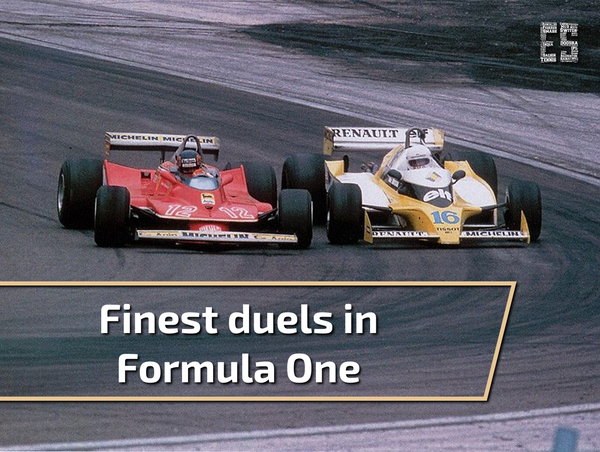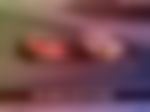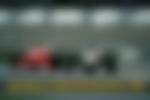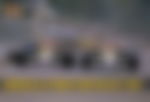

These days, F1 duels are rare to find. Any F1 fan anticipates the outcome of the smallest scrap. Who will be on top? Will they collide? It certainly takes some courage to duel with another driver with the FIA ready to impose any penalty. Formula One has witnessed some breathtaking duels in the past. They still serve a benchmark for racing. Wheel to wheel and without pushing the other off the track or even crashing.
Here we present you some of the finest duels in the history of Formula One:
ADVERTISEMENT
Article continues below this ad
Finest F1 Duels
René Arnoux x Gilles Villeneuve
French’GP 1979

So much would still follow. Side by side they went, touching wheels, going ahead of the track limits, almost defying Physics. Every corner became a place to try, every little mistake or line change the password to be attacked. And Villeneuve dived breathlessly to finally give Arnoux no reply. Only three tenths split them on the chequered flag, but it was clear that they knew it was a masterpiece. No place for protests, discussions or something like. It was a fine F1 duel, Formula One at its best.
Lewis Hamilton x Nico Rosberg
Bahrain’GP 2014

For the first time since its return Mercedes became a real title contender. Still early days for talking about rivalry, politics, clashes and so on. At the Sakhir Circuit, they gave an example on how fair F1 duels should be. One should only look to Toto Wolff and Niki Lauda’s expressions to know the true meaning of fear.
They battled for the first third of the race until Hamilton opened a healthy cushion. It didn’t last long, as the different tyre strategy and the safety car helped Nico to erase that disadvantage. And again they started, the german all attack, the briton trying to leave no gaps, the position earned on the start (yes, the pole position was the car 6, not the 44) too good to be lost. And tried as he might, Rosberg found not a hole in which to put his Silver Arrow.
That race could be remembered for ever as the one held while Bahraini people protested against the dominant family (part of the Arabian Spring), but, indeed, what happened on track left a way better kind of reminds.
Nelson Piquet x Ayrton Senna
Hungarian’GP 1986

If now it is simple to the circus to go to different destinations as Azerbaijan, Russia, Singapore and South Korea, things were different on the eighties, at least considering former communist republics. One would never imagine a Grand Prix there, until Hungarian authorities decided they could host a GP, helped greatly by Mihaly Hidasy, an expat who found himself as Brazilian GP race director. Came 1986 and the Hungaroring was a top-class track, with everything Bernie Ecclestone could demand to bring his show in.
At that time, F1 cars were beasts that, in qualifying trim, could deliver up to 1.500hp. Make them stay on track demanded huge car control and a enormous sensibility with pedals and gear lever (pads on the steering wheel, what is that?). An inch more and the gravel trap was the end of the road.
And on that August 10th, two brazilians shared the first row. Nelson Piquet was the pole, while Ayrton Senna lined up his Lotus just behind… to lead the race once Turn 1 came. And he opened a cushion that seemed to be enough to seal win. But with new tires, the other three-time world champion erased the gap with some ease. And with the Lotus draft, he dived on the inside of the main straight, but the initial advantage proved to be a double-edged sword once the cars went left, and Senna regained the top spot.
Second try and Piquet opts for the outside, left wheels over the kerbs, a class of late breaking. But the Williams started to go sideways, massive oversteer, losing rear as close as it could. It couldn’t stick. Or indeed it could, as the images show. Sadly, with time, F1 discovered that overtake wasn’t so easy in Budapest. But the all Brazilian battle was one of the most enjoyable F1 duels.
Ayrton Senna x Alain Prost
Japanese’GP 1989

In Spain, three weeks before, it was Senna first, Prost third, which set the tone for the first decider. Came qualifying and the brazilian set one of the most blistering laps ever – but the french was there, at his side. On the infamous descending straight, it was making business as usual, and the win would be closer. But, some gearbox glitches intervened and, come Turn 1, Prost was ahead. Exactly what Senna didn’t need.
Throughout the race, Senna discovered how hard it was to find a hole on his rival’s defence with similar equipment. Laps were becoming lesser each time and the title was slipping away. Eight laps to the end, after the long high speed part since the infamous 130R, the brazilian decided to dive on the outside. He was briefly ahead at the chicane, but Prost had a better line and, with less to lose, let the car slip… until they touched.
The pair went to the asphalt trap, for Prost it was game over, but Senna returned, changed tyres and started a relentless pursue on new leader Alessandro Nannini. Attack mode, and he regained the top spot. Problem was that the powers to be decided it wouldn’t be that way. By saying that Senna cut the track to return, Jean-Marie Balestre, FISA’s president, found a decent reason to disqualify the brazilian. This was arguably one of the greatest F1 duels of all time.
Ayrton Senna x Alain Prost
Japanese’GP 1990
What happened the year before wouldn’t stay alone. Senna’s approach would undermine Prost’s patience and, feeling that McLaren helped the brazilian’s cause, the french decided to go and was received as the new messiah by Ferrari. Not that Nigel Mansell would be an easier companion, but he thought that, by having the better of the briton, his number one status would be guaranteed. And it was that way, starting with a very unpopular win in… Brazil.
Senna’s seven wins and Prost’s five (until Suzuka) made a perfect picture for another title shootout. This time, the ball was on the brazilian’s side, and Prost needed to beat him to stay alive until Australia. And again they were side by side on the first row.
All the thrill on the fanatic japanese crowd, the lights turn to green and on they go… until the first turn. Prost was on the verge of stealing the first place from Senna, but the brazilian kept his McLaren on the line, two cars in the same amount of space, contact was unavoidable. Both cars on the gravel trap, and Senna was champion for the second time. Later, he would say about the incident. “Sometimes races are decided on the last laps (remembering the 1989 clash), sometimes on the first turn. It has been a very short duel, but a tense, and intense one. And the brazilian fiesta was complete with an unexpected double. Nelson Piquet won the race; his teammate at Benetton Roberto Moreno second. This was one of the most controversial F1 duels.
Sebastian Vettel x Fernando Alonso
British’GP 2014

And it was only fifth place at stake. But they were decided to show their talent, and entertain the crowd they did. For so many laps, they stayed together, only inches apart, Vettel fierce attack to Alonso’s strong defense. Through Brooklands straight, into Luffield and the old pit straight, the Red Bull seems to be ahead, the battle decided, only to the Ferrari breaking on the very end. People throughout the world was left breathless. Will they will touch, bang wheels or will they end at the escape area. They did not anything stupid. And finally, after so much trying, Vettel finally made prevail his better car. But it was one of the best F1 duels in the modern era
Mika Hakkinen x Michael Schumacher
Belgian’GP 2000

Came belgian GP and the Mercedes engine seemed to have an edge at Spa. Such was the case that Hakkinen won the pole, having at his side the surprising Jarno Trulli and his Jordan-Mugen. Start happened with the safety car and, when it came back to the boxes, the silver McLaren was in a class of its own. Until a spin on lap 13, that hampered a bit Hakkinen’s plans. He started all over again, ate into Schumacher’s lead and, on lap 39, finally was close enough to try.
That he did at Stavelot, with a huge draft push since Eau Rouge, but the german defended harshily, almost banging wheels. And despite being at something like 340 kph, Hakkinen left his disaproval clear, shaking hands. One lap later and he would try again, but this time there was the backmarker Ricardo Zonta in front of the pair. And depending how they would handle that, it could well become a nightmare or the key to victory. Schumacher veered to the left and Hakkinen enjoyed the opportunity the best possible way: he swerved to the right side, his speed and moment so huge that a poor Zonta (who had nowhere to go) and the Ferrari were left behind in a single movement. That Schumacher had no answer later only showed who really deserved to win that weekend. It was certainly one of the most memorable F1 duels
Nigel Mansell x Ayrton Senna
Spanish’GP 1991
The 1991 season was a transitional one, with McLaren and Ayrton Senna still ahead, but the reemergence of Williams as a force. The partnership with Renault and the creative genius of Patrick Head and a “certain” Adrian Newey, together, created one of the most incredible F1 cars ever built, the FW14, with its active suspension and futuristic systems – some even said it could race alone, without a driver on the cockpit. But it wasn’t an easy birth, the real rewards would be reaped a year after. Which didn’t prevent Nigel Mansell of challenging Ayrton Senna on the right occasion.
And Montmeló, with its long straight, was one of those. Suprinsingly, Senna was out of the first row on the grid – Gerhard Berger, his teammate, got the pole position, with Mansell at his side. The briton had something to worry about: an injury on an ankle, consequence of a football match clash. And, to make matters worse, rain came on sunday morning – track was still wet at the start time.
Berger kept first place, while Senna went ahead of Mansell (Michael Schumacher would do the same). The brazilian, however, could not count on his teammates favours, as Schumacher and Mansell were right on his tail. Still with rain tyres, but the asphalt starting to dry, the Williams overtook the Benetton and started to chase the McLaren ahead.
But, it was Ayrton Senna, and, with similar equipment, it would never be easy, specially considering they were the title contenders. Along through the whole straight, inches apart, it was hard to end without tears, turn one coming fast. Who would brake later? Mansell did, to overtake with bravery and talent. Later, he would say that Ayrton used not to respect him on the close duels, and that he sticked with the manouver to earn that respect. And as the cherry on the cake, he fought Berger to earn the lead, one he would keep until the chequered flag.
Nigel Mansell x Nelson Piquet
British GP’1987

That’s how things were when they went to Silverstone – needless to say that the full capacity grandstands had only eyes on Mansell’s performance. It was the perfect scenerio to a dominant win, if onky he could beat his teammate. And one might not forget that it was the fastest track of the time, average speeds flirting with 245kph.
That it would be a all-Williams affair was written on the wall. But it was Piquet who had the first shot, dominating qualifying and relegating Mansell to P2. A real surprise was to see Alain Prost surge ahead on the start, even if only for a couple of laps. Soon, he was left behind by the pair, Piquet always ahead, with the attack from Mansell gaining strength. Suddenly, his Williams loses ground, a wheel problem makes the car undriveable. He pitted and rejoined a huge 29 seconds behind the brazilian.
But such was his resolve that Nigel broke 11 times the lap record to erode that difference and, two laps for the chequered, had the other Williams at target. At Hangar Staraight, he got the draft of Piquet and sticked until Stowe, where he finally had the better of the brazilian. Crowd went nuts with that hard-fought win.
Ayrton Senna x Michael Schumacher
South African’GP 1993

ADVERTISEMENT
Article continues below this ad
By some sense, it was the expected duel, one that would be seen way lesser than expected by F1 fans. Michael Schumacher’s Benneton Ford was a much more competitive package that Senna’s McLaren, and the german was no more a novice, but a champion in perspective, while the brazilian was established with his three world championships. With Prost leaving after that winning season, they would be the real contenders from then on.
Senna started second, only to have his advantage to the german reduced as the laps went on. On the lap 20, the green and yellow Benetton (funnily, Brazil’s national colours) started to appear bigger and bigger on the McLaren’s mirrors. It seemed to be a matter of time, as the german tried to find any hole on the brazilian’s defence. Kyalami circuit nature, with its twists and turns, played on Senna’s hands.
Schumacher tried so many times to brake later and use the draft to jump ahead. Senna showed all his compose, using all track extension possible (and allowed), keeping the rival at bay. But the german was decided to have a go and, on lap 41, that he did. The Benetton went to the inside on a right-hander, for inches he was ahead, but Senna was decided not to give up, and his right rear tyre touched Schumi’s front left. For the latter, it was game over, while the McLaren went on to confirm second place. A first real display of what could have been, but unfortunately wasn’t.
ADVERTISEMENT
Article continues below this ad

ADVERTISEMENT
ADVERTISEMENT
ADVERTISEMENT
ADVERTISEMENT

